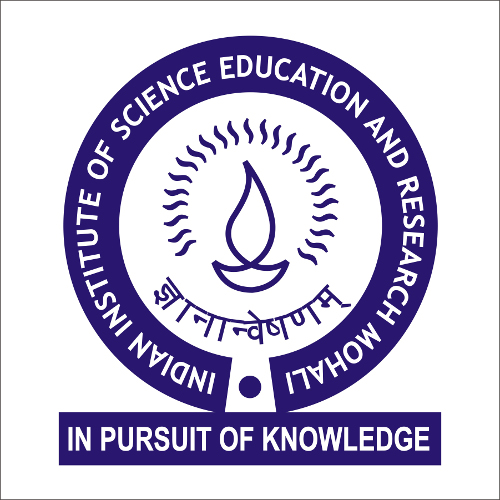Forthcoming Events
The mystery of spontaneous chemistry at the air/water interface and its impact on air quality
Christian George, Univ Lyon, Université Claude Bernard Lyon 1, CNRS, IRCELYON, F-69626, Villeurbanne, France
Location : Academic Block 2; Seminar Room 5A
Abstract: Aerosols and clouds are key players in tropospheric chemistry. These tiny particles suspended in the air, with a radius ranging from a few nanometres to tens of micrometres, impact atmospheric composition, represent one of the largest uncertainties in climatic projections and cause millions of deaths worldwide every year. Hence, they have enormous societal and economic consequences. Nonetheless, there is still a knowledge gap preventing us from describing the chemical evolution of aerosols and clouds during their atmospheric lifetime.
Water molecules in bulk liquid are stable and inert under ambient conditions. In sharp contrast, it was very recently shown that the local orientation of water molecules at an air/water interface induces an electric field that generates spontaneous radicals in micron-sized droplets. This production does not involve any catalysts such as light or heat. It is an intrinsic property of the air/water interface, and therefore potentially ubiquitous in the troposphere.
This spontaneous interfacial oxidant formation has never been explored for its atmospheric significance. Therefore, this presentation aims to unravel the atmospheric importance of this interfacial (dark) chemistry. If oxidants (including OH radicals) are in fact spontaneously produced at the air-water interface, under atmospherically relevant concentrations, this would profoundly challenge our understanding and description of atmospheric multiphase chemistry.
KEYWORDS: aerosol, interfacial chemistry, OH radicals
Bio: Dr. Christian George received his PhD in Chemistry at the University of Strasbourg in 1993. He did his postdoctoral work at the Fraunhofer Institut für Toxikologie und Aerosolforschung. He then worked as a CNRS Research Scientist at the Centre de Géochimie de la Surface in Strasbourg, and then at the Laboratoire d'Application de Chimie à l'Environnement (LACE). In 2006, he became a senior scientist at the Institut de Recherches sur la Catalyse et l'Environnement de Lyon (IRCELYON). Since 2016, he assumes the position of Deputy Director of IRCELYON. He has served on numerous international scientific committees and panels, including IGAC and iCACGP, and is a double grantee of the prestigious European Research Council advanced grant scheme. His current research portfolio is based on studies bringing together atmospheric chemistry, environmental chemistry, physical chemistry, chemical kinetics, Photochemistry… for a better understanding of the processes occurring in the troposphere. A central aspect of this work is the participation in collaborations across many disciplines. Throughout his scientific career conducted at different locations and countries, he always tried to initiate innovative and original studies, opening new research directions in my field of research.
Water molecules in bulk liquid are stable and inert under ambient conditions. In sharp contrast, it was very recently shown that the local orientation of water molecules at an air/water interface induces an electric field that generates spontaneous radicals in micron-sized droplets. This production does not involve any catalysts such as light or heat. It is an intrinsic property of the air/water interface, and therefore potentially ubiquitous in the troposphere.
This spontaneous interfacial oxidant formation has never been explored for its atmospheric significance. Therefore, this presentation aims to unravel the atmospheric importance of this interfacial (dark) chemistry. If oxidants (including OH radicals) are in fact spontaneously produced at the air-water interface, under atmospherically relevant concentrations, this would profoundly challenge our understanding and description of atmospheric multiphase chemistry.
KEYWORDS: aerosol, interfacial chemistry, OH radicals
Bio: Dr. Christian George received his PhD in Chemistry at the University of Strasbourg in 1993. He did his postdoctoral work at the Fraunhofer Institut für Toxikologie und Aerosolforschung. He then worked as a CNRS Research Scientist at the Centre de Géochimie de la Surface in Strasbourg, and then at the Laboratoire d'Application de Chimie à l'Environnement (LACE). In 2006, he became a senior scientist at the Institut de Recherches sur la Catalyse et l'Environnement de Lyon (IRCELYON). Since 2016, he assumes the position of Deputy Director of IRCELYON. He has served on numerous international scientific committees and panels, including IGAC and iCACGP, and is a double grantee of the prestigious European Research Council advanced grant scheme. His current research portfolio is based on studies bringing together atmospheric chemistry, environmental chemistry, physical chemistry, chemical kinetics, Photochemistry… for a better understanding of the processes occurring in the troposphere. A central aspect of this work is the participation in collaborations across many disciplines. Throughout his scientific career conducted at different locations and countries, he always tried to initiate innovative and original studies, opening new research directions in my field of research.

